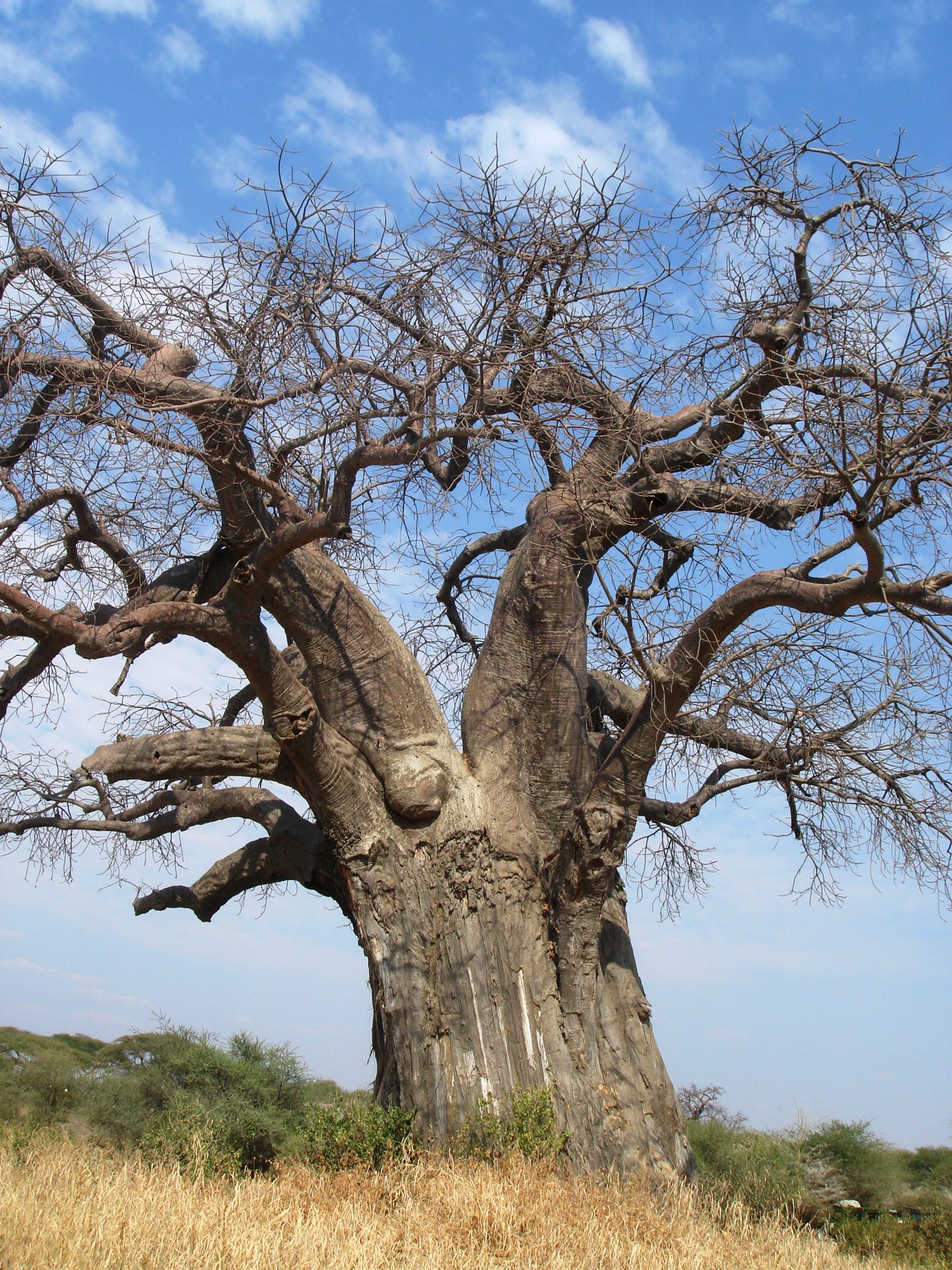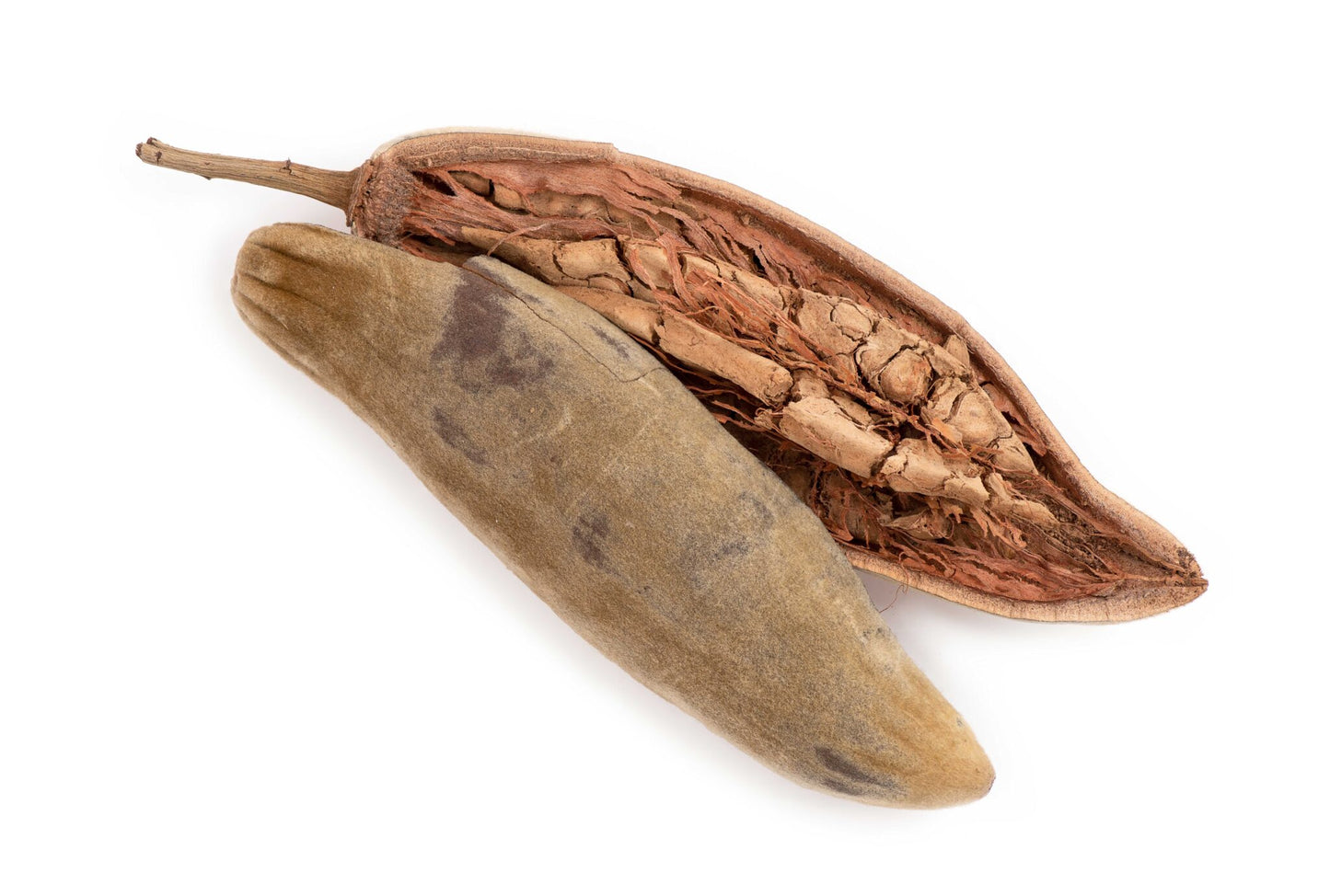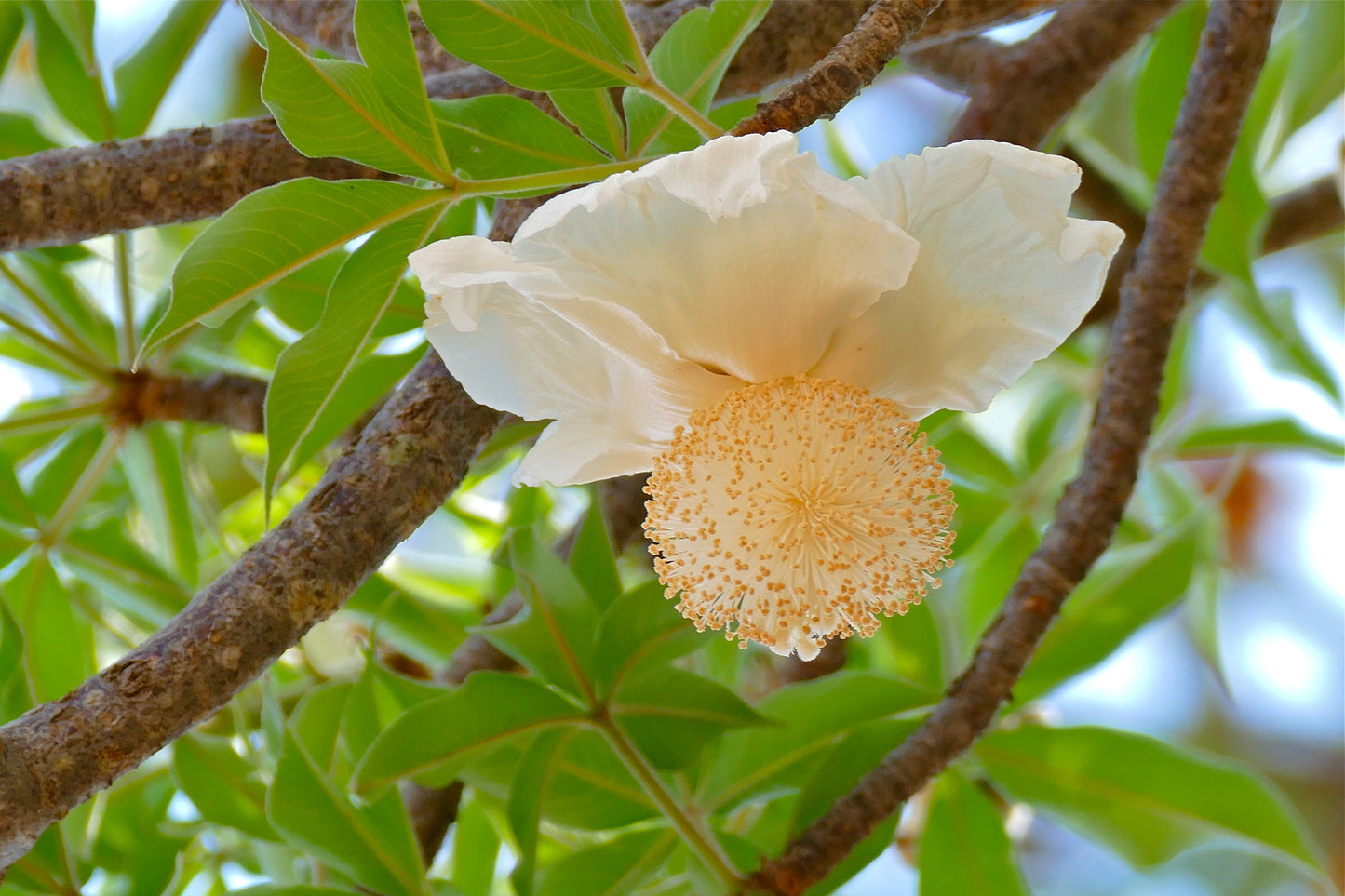-
ADANSONIA DIGITATA (BAO BAB)
ADANSONIA DIGITATA (BAO BAB)
Couldn't load pickup availability
MINIMUM TEMPERATURE SUPPORTED +3°C
(DATA REFERS TO AN ADULT PLANT IN OPTIMAL HUMIDITY AND SOIL CONDITIONS)
FROM WIKIPEDIA
The African baobab ( Adansonia digitata L. ) is one plant from the family from the Malvaceae ( subfamily Bombacoideae ) [1] [2] .
It is widespread throughout much of Africa , and is legendary for its exceptional longevity and the considerable size that its trunk, rich in ramifications, can reach.
Description
Stem
These trees have a trunk swollen that can reach 25 m in height, with a diameter of 3–10 m; there bark it is smooth, red-brownish to greyish in colour, up to 10 cm thick. [3]
Leaves
The leaves they are alternate, typed, with 3-9 digits 5-15 long and 3-7 cm wide, dark green in colour, with entire margin. [3]
Flowers
THE flowers , bisexual, actinomorphic , they have a diameter of up to 20 cm; present a chalice deeply lobed and petals waxy in consistency, whitish; The stamens , very numerous, form a central bow; the ovary it is superior, with 5-10 concamerations. They flower at dusk and after just 24 hours they wither, becoming brown in colour. [3]
-
Flower
-
Flower
-
Longitudinal section of the flower
Fruits
The fruit is roughly ovoid in shape, 12 cm long or even more; consists of a epicarp woody, covered with a yellow-greenish down, and a endocarp pulpy, divided by fibrous filaments into 5-10 segments, which contain the seeds . [3]
-
Fruits
-
Fruit in section
-
Seeds
Biology
Pollination Of Adansonia digitata it is the work of different species of bats . [4] Among the species whose involvement has been convincingly demonstrated are Eidolon helvum , Epomophorus gambianus And Rousettus aegyptiacus . [5] [6] [7]
Some nocturnal primates seem to play a minor role Galago senegalensis And Otolemur crassicaudatus [8] and some nocturnal butterflies such as Heliothis armigera , Diparopsis castanea and Earias biplaga [3] .
They are also visited by bees and by other insects. [9]
Distribution and habitat
The species is widely distributed in sub-Saharan Africa . [3]
Uses
The fruits, leaves and flowers are an important nutritional resource due to their content in C vitamin . The seeds are rich in proteins and are used for the extraction of an oil for food use. [10]
The bark fibers are used to make ropes, baskets, clothing and hats. [10]
Various parts of the plant are used in folk medicine: the bark and roots reduced to powder are used as a remedy against malaria ; the fruit pulp mixed with the honey it is used against coughs; the leaves are used to treat diarrhea and fevers. For these virtues the plant is the object of veneration among many African populations. [10]
RICHIEDI FOTO
RICHIEDI FOTO
Scrivimi su WhatsApp al +393472475878 per ricevere foto piante in vendita


















